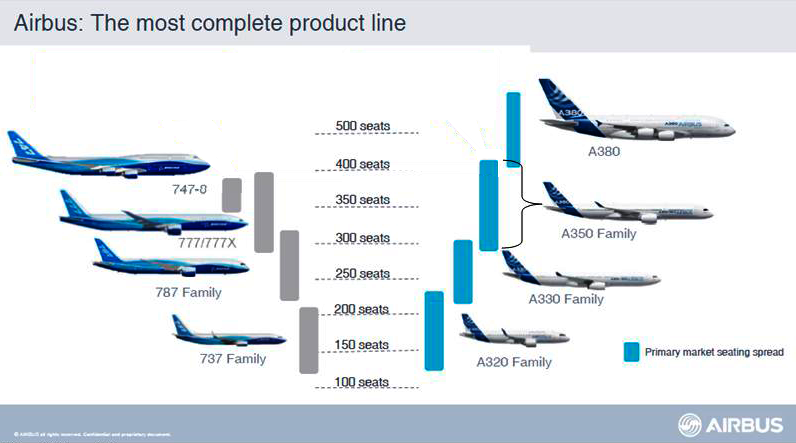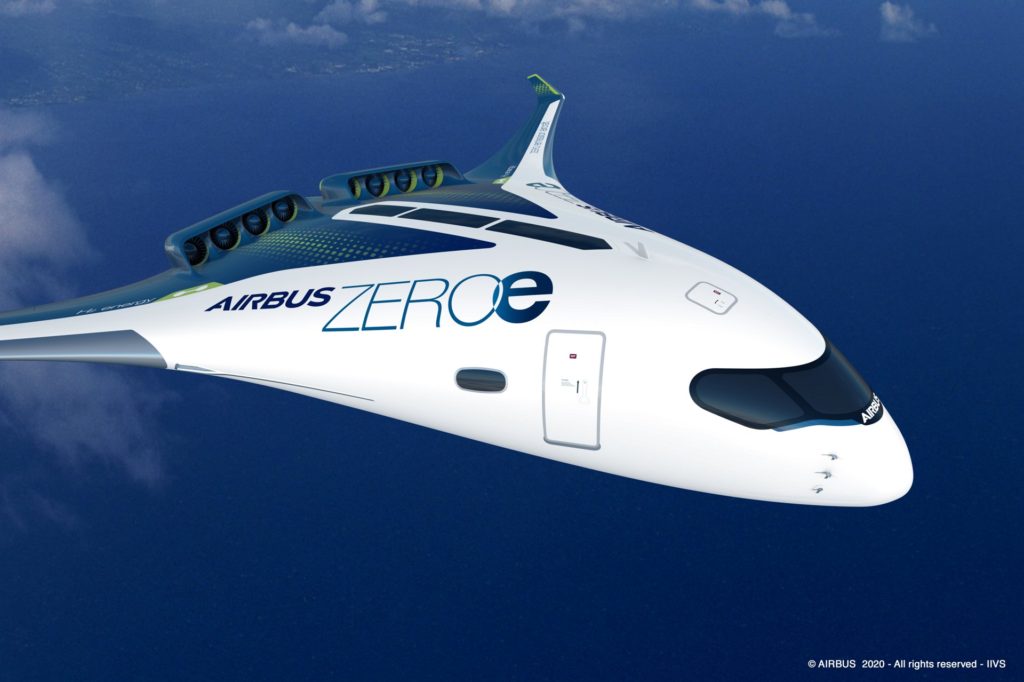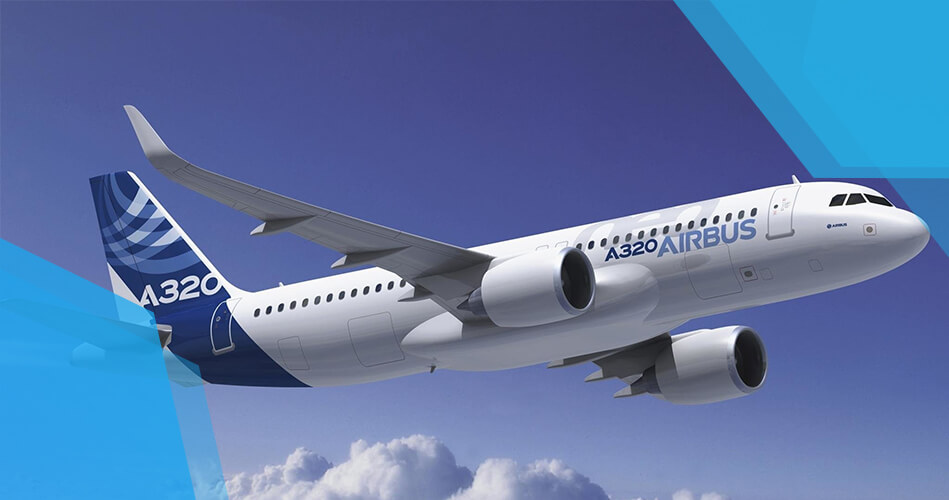Brands are taking over every aspect of our lives, but have you ever wondered which aircraft you would be getting on for a trip before you book your ticket? Lockheed, Cessna, Boeing, Airbus, Antonov, McDonnell Douglas, Convair, Bombardier, and so on but when it comes to air travel, is the brand important? Have you ever wondered?
When it comes to passenger aircraft, the race is dominated by two major names, Boeing and Airbus. It is strictly a duopoly. The race keeps getting dominated by either of the two, but looking at the recent events Airbus seems to have gained the upper hand.
History of Airbus
In all technical terms the company Airbus was incorporated as a single enterprise in the year 2000 but it existed well before that and consolidated in the year 1977 when British Aerospace Systems (known as BAE) was incorporated into the mix of companies that combined powers to run the enterprise before this. The company ran as a GIE (Grouping of Mutual Economic Interest, originally in French) before being consolidated into a single enterprise.
Airbus began its journey in 1965, as a program incorporated to build a jet with large seating capacity capable of long-distance travel, by the German and French governments. The idea was to build a European aircraft suitable for the European region capable of having a seating capacity of 300. Initially, the British company joined in through Hawker Siddeley Aviation, French company Sud Aviation and Arge Airbus from Germany (a consortium component manufacturers). The British company fell out of the program in 1969 leaving only the German and French manufacturers to soldier on, continuing as a subcontractor to the deal. In 1971, the Spanish company Construcciones Aeronautics S.A (CASA) joined in with the consortium. Further in 1977, Hawker Sidley and many other British manufacturers joined together to form BAE Systems, which joined Airbus with a 20 percent share. This GIE finally consolidated the company Airbus, but in 2000 the GIE was replaced by a single enterprise called the Airbus.
Currently, Airbus stands as an entity where 80 percent is owned by what was the previous GIS and 20 percent owned by BAE systems. In the beginning, the company’s ambitious program to have a long-distance aircraft with a seating capacity for 300 seemed difficult to achieve since the engines that were supplied, at the time, by Rolls Royce (Rolls Royce RB211) lacked the power to fly such a large aircraft, hence the first aircraft, the A300, had a scaled-down seating capacity of 250, with engines supplied by GE and Pratt & Whitney, and suitable for short to medium range flight. Initially when the consortium was set out to build the aircraft the agreement was that, French would build the cockpit, control systems, Germans the Fuselage, and the British the wings, and towards the end when the Spanish joined they would build the Tail section of the airplane. These structures would be transported via trucks, ships, railways, and even through the air to be assembled in France. The first order for the A300 was taken by the French airlines, Air France on September 3, 1970, and took its first flight for the airlines on October 28, 1972.
Initially, the A300B sold poorly due to the relative new entry into the market, Airbus came out with the A300B with a slightly larger capacity but a similar design and engine. The tides turned in favor of Airbus with their second model of aircraft in July 1978, the A310. The aircraft was similar to the A300’s but had a smaller body and a longer range.
The aircraft took to the skies in 1982 the aircraft was an immediate hit, with its ability to give greater savings to the industry players. Then in 1988, came the A320 with new technology such as fly-by-wire, computer-based controls which was a notable turning point in the industry, a single-aisle seating system. With the arrival of the A320 Airbus became a significant force in the industry. During the years Airbus came up with alterations to suit all modes of transportation depending on the requirements, the A340, and later the A330 into the twin-engine long-range segment. A significant niche was addressed by Airbus in 2007, the large capacity, ultra-long-range aircrafts the A380 – the world’s largest aircraft was built, with a maximum seating capacity of 850. The A320 and its variations have been Airbus’s best selling model till date.
The confusing line-up
The product break-up of the aircraft manufacturer is fairly simple compared to its history. By simple segmentation, the segments can be made out of the seating capacity and range of the aircraft. The segments are
Small Capacity Medium Haul – A318.
Small Capacity Long Haul – A220-100, A220-300, A319NEO, A319CEO, A320NEO, A320CEO. These are the best sellers as these are most commonly used for domestic travel
Medium Capacity Medium Haul – A321CEO.
Medium Capacity Long Haul – A321NEO, A330-200, A330-300, A330-300.
Large Capacity Long Haul – A330-900,A350-900.
Very large Capacity Ultra-Long Haul – A350-1000 and the A380.
Yes, actually the product line is also just as confusing as the history of the company. Having said that, it also has one of the most complete product lines.

The selling point
Initially, the company found it difficult to gain traction in the industry with its A300B, which was a market dominated by the American airlines makers Boeing along with other players, who slowly were out of the game. Airbus and Boeing have been in loggerheads since the very first flight of the A300B. The American airlines dominated in America which had the largest number of people traveling through air. Airbus’s initial plan was to gain traction in the American markets. The first break was hard to come by, but in 1978 Airbus deployed a new tactic in the American market by giving four A300’s to the Eastern airlines for ‘Free’ as trial.
If the company did not like the aircraft, they could return the aircraft back to Airbus and they would take it back, completely free of cost. This was a hit, the airline ordered 23 more aircraft after this and Airbus officially arrived in American soil.
Manufacturing aircraft is expensive, buying one is even more expensive so it’s easy to guess that the maintenance of such advanced machinery would be expensive as well. Mostly the selling point in the industry was the price of the aircraft, even if the maintenance could be managed by local players, purchasing aircraft was major capital expenditure for companies.
Airbus hit a masterstroke identifying this. Through the 1980’s Airbus gave bulk discounts for smaller orders only to include in the contract that if the buyers like the products they would buy more in number in the future. Airbus in 1986 told Northwest airlines that they could purchase 10 A320 and get a bulk discount of a 100 plane order (by signing a contract) and if Northwest did not like the aircraft they could forget ordering the rest for 90 airplanes and Airbus would take in the losses.
This played out well, not only did Northwest like their aircraft but also they ordered the remaining number and more. Marketing passenger aircraft is a tricky business, you always have to hit the right notes to make a proper sale and Airbus always seems to have been able to strike that note.
In an industry with heavy capital expenditure, Airbus forged relations with airline companies by innovating throughout their lifetime. The company looked at the requirements of the companies and kept working on innovations towards those requirements. When the American airlines focussed on luxury for their aircraft, Airbus focussed on improving the efficiency by increasing range and lowering the cost of maintenance for its customers. These measures forged a relationship with airlines which helped Airbus make its position as a major global player in the market.
Also Read: The Superiority Of Amazon Logistics & Supply Chain
The shift in the market
What consolidated Airbus’ position as a major player was actually the tragic crash of Boeing 737Max, first in Jakarta and a second in Ethiopia. The industry relies on guaranteeing safety to its passengers and two crashes from the same airliner of the same make happened consecutively, the Boeing Airline company took a major hit. This was followed by aggressive marketing by Airbus stressing on its safety features and how it values the safety of its passengers. This further consolidated and developed the company’s brand image with its customers, crucially gaining the leading market share.
Indian context
Airbus first flew in India more than half a century ago and is still the strongest player in the Indian market. With most of the national carrier, Air India, consisting of Airbus’s and Indigo, being India’s largest private domestic airlines consisting almost only of Airbus aircraft. India was one among the early adopters of the A300B aircraft, with the first aircraft delivered to India on October 31, 1976, registered VT-EDV and served in India till November 15, 1993 when it had to make an emergency landing. The relationship between India and Airbus has always been strong and stable throughout history and looking at the current market scenario it would seem that this is set to continue. So the next time you buy an airline ticket, think about that, does the brand matter?
Unveiling Zero-emission concept
Airbus recently unveiled 3 visual concepts for zero-emission planes to be powered by hydrogen. The company expects to launch them by 2035. Unlike normal planes, these will burn liquid Hydrogen from the rear fuselage. However, the project faces few challenges – such as finding ways to safely store volatile liquid hydrogen at cold temperatures during flight.
Airbus aims to draw public attention as European governments push for cleaner technology. The ZEROe initiative includes conventional-looking aircraft:
- Turbofan jet that could carry 120-200 people over 3700 km
- Turboprop that could carry 100 people over 1850 km
A third proposal is to have a blended wing body that is yet to be presented.




